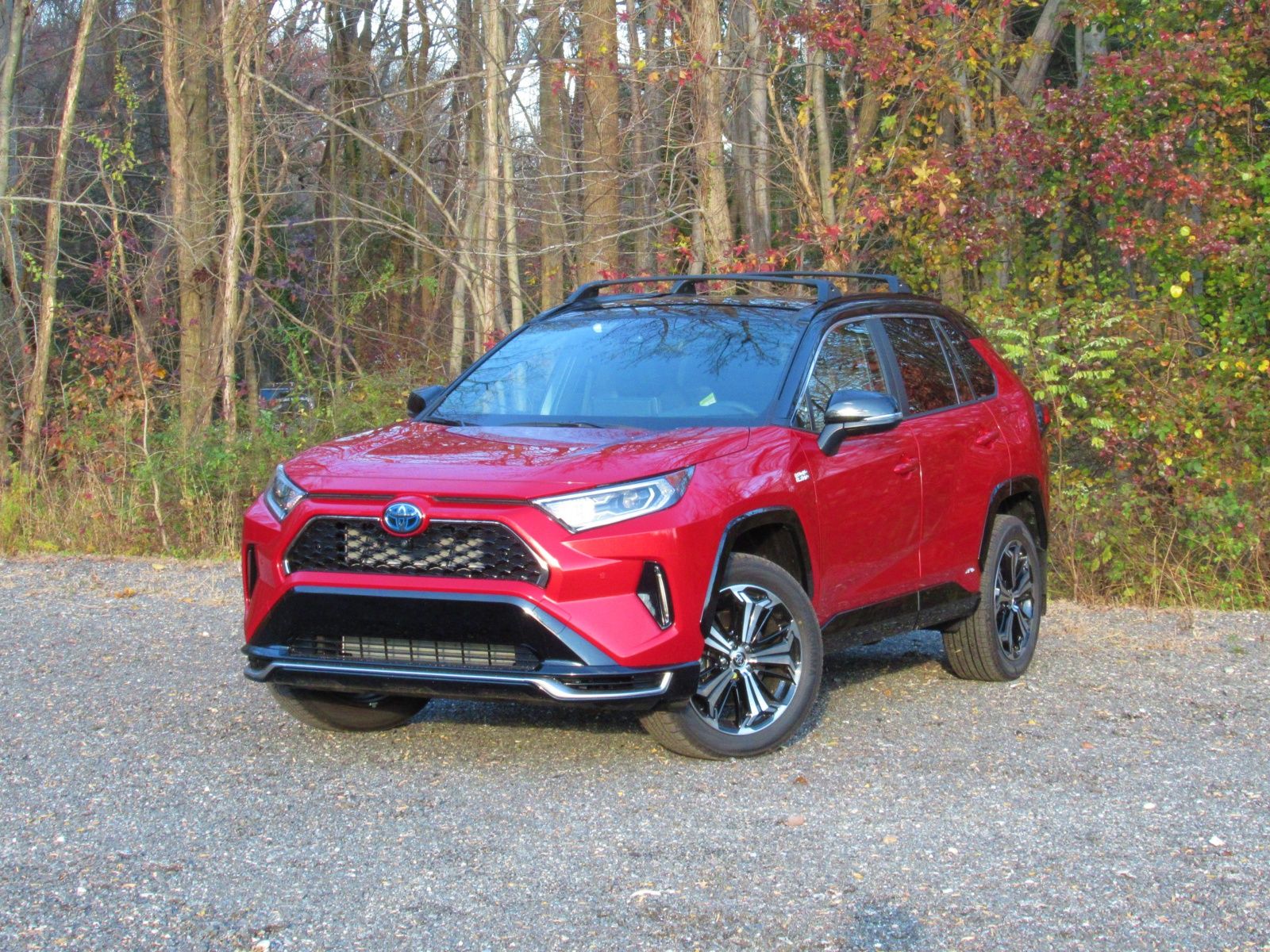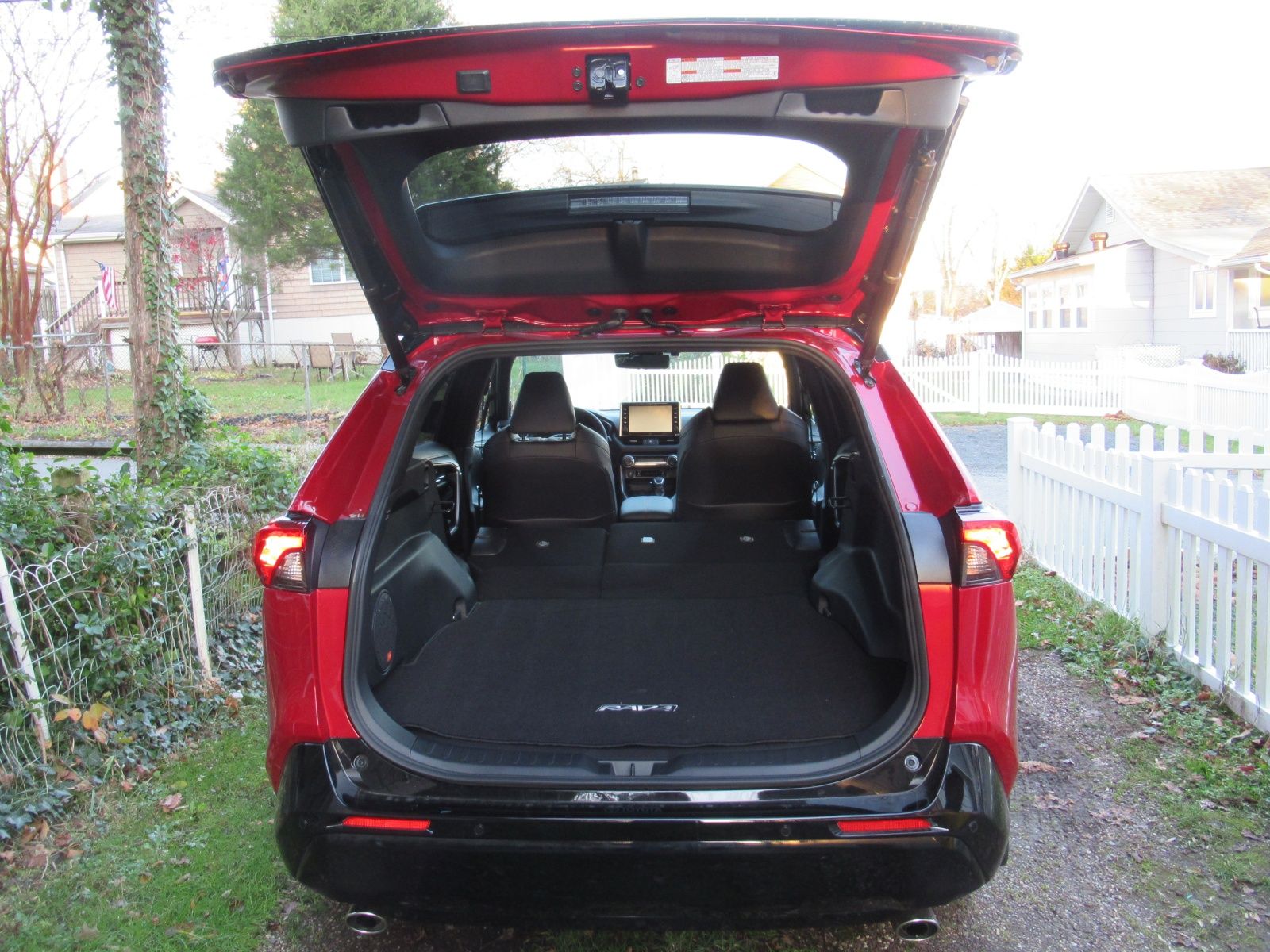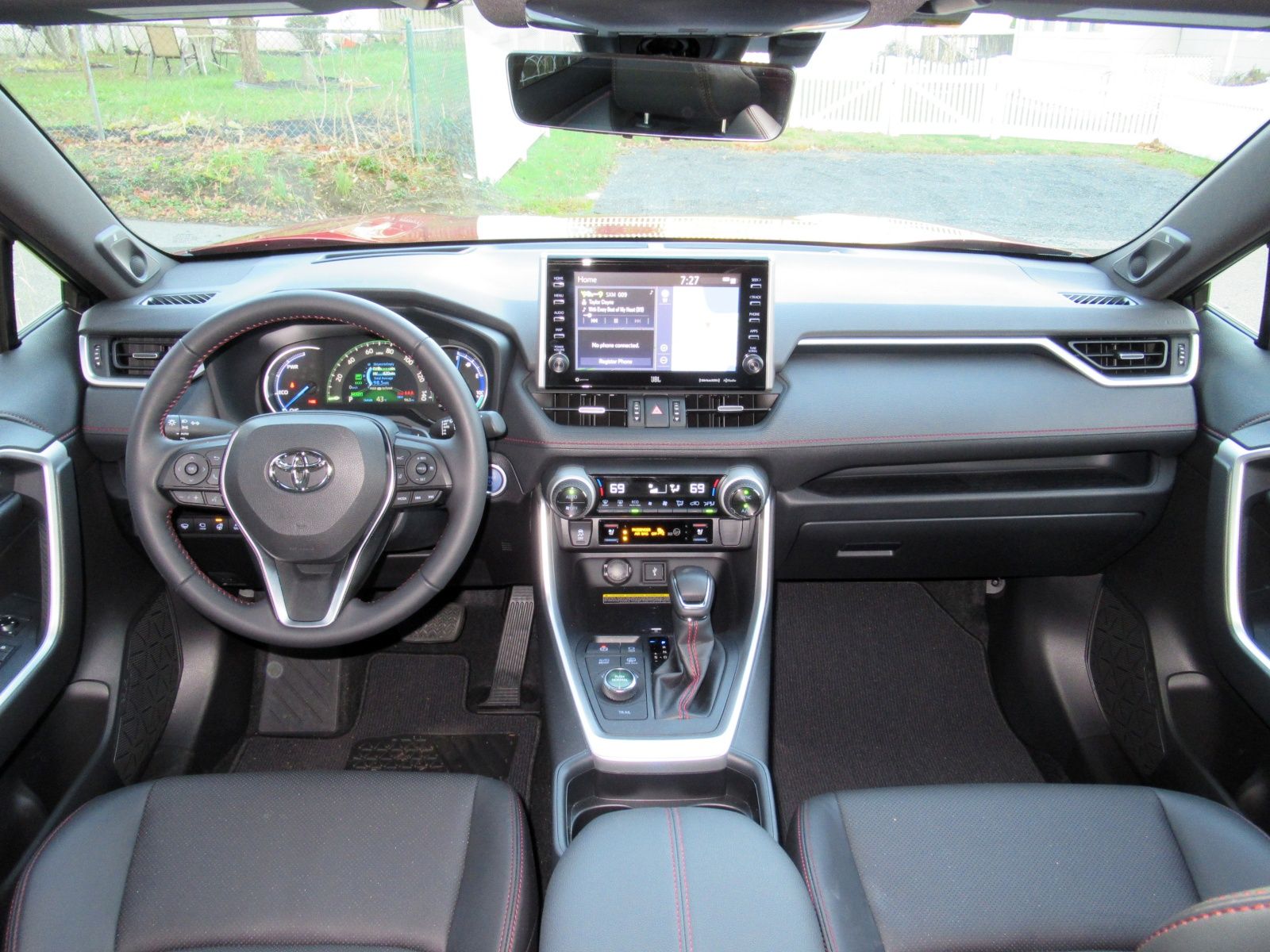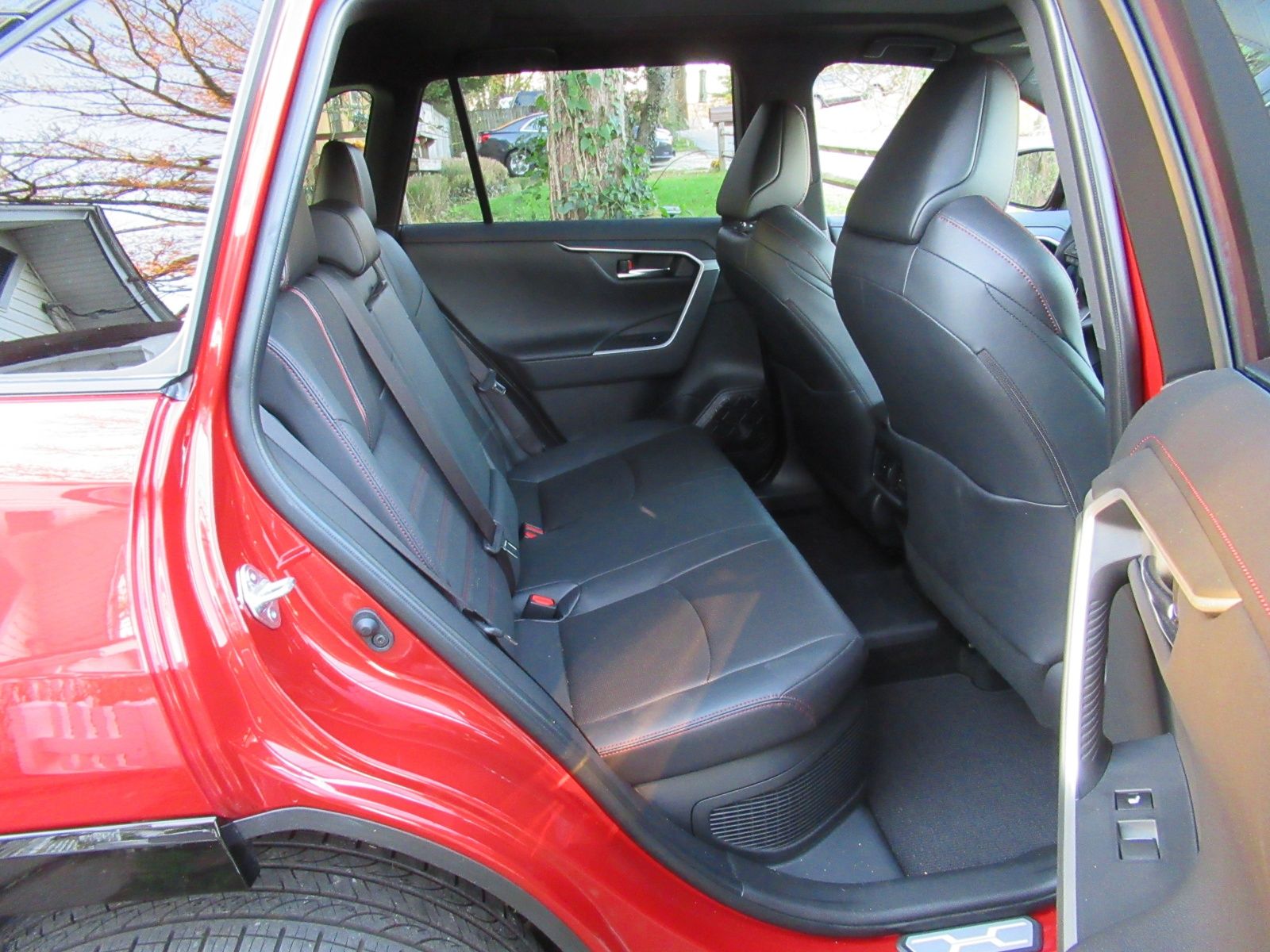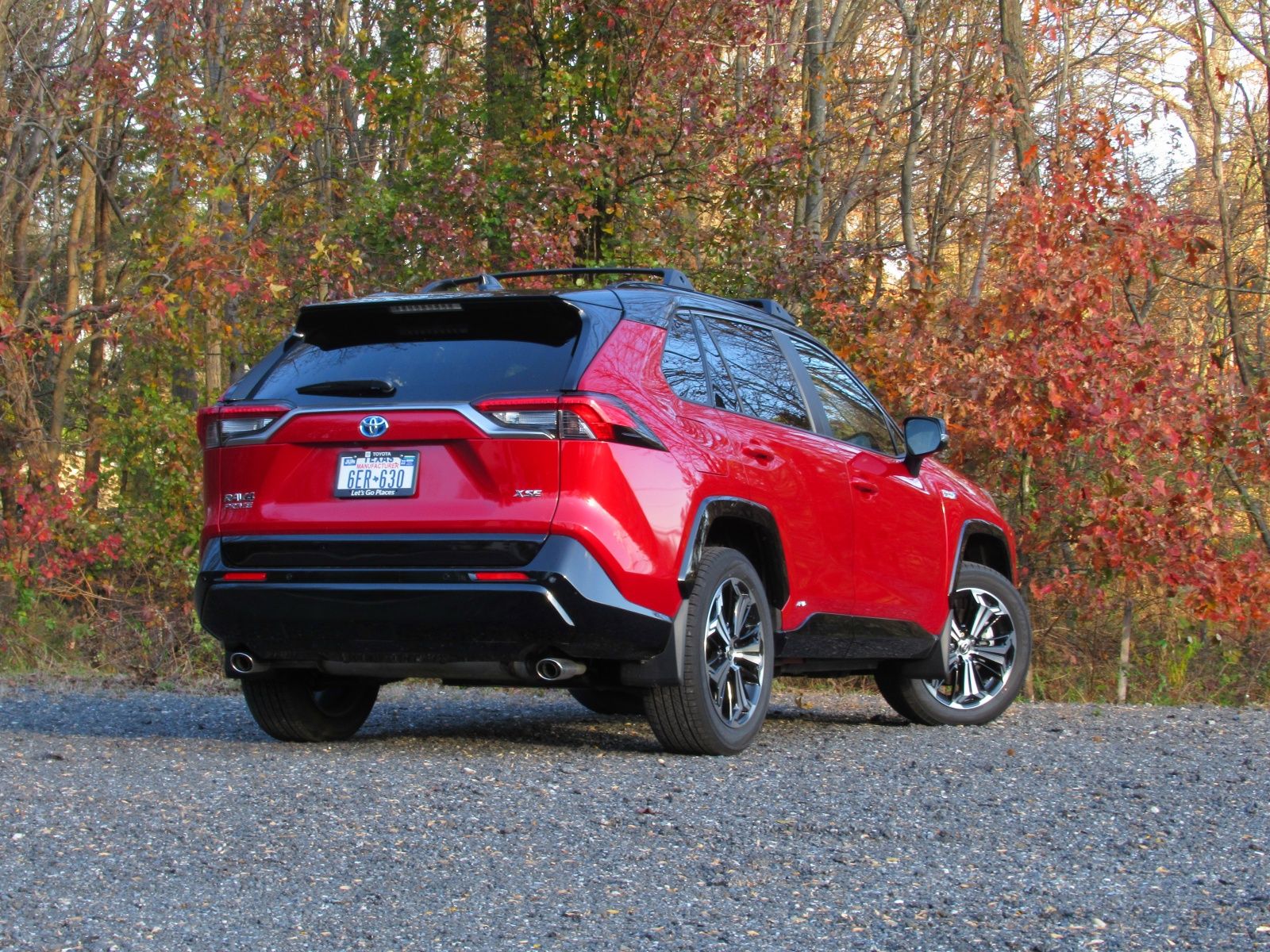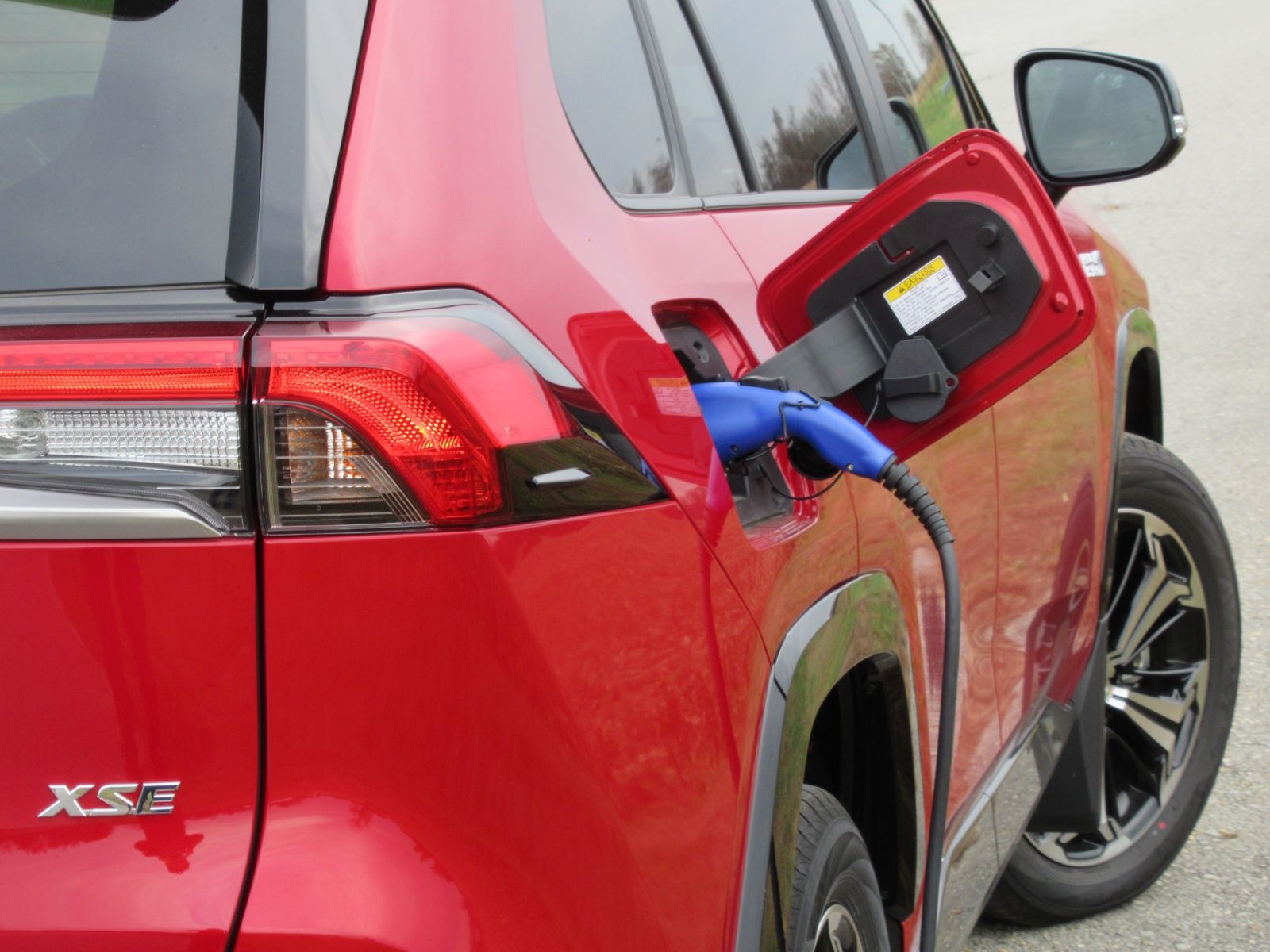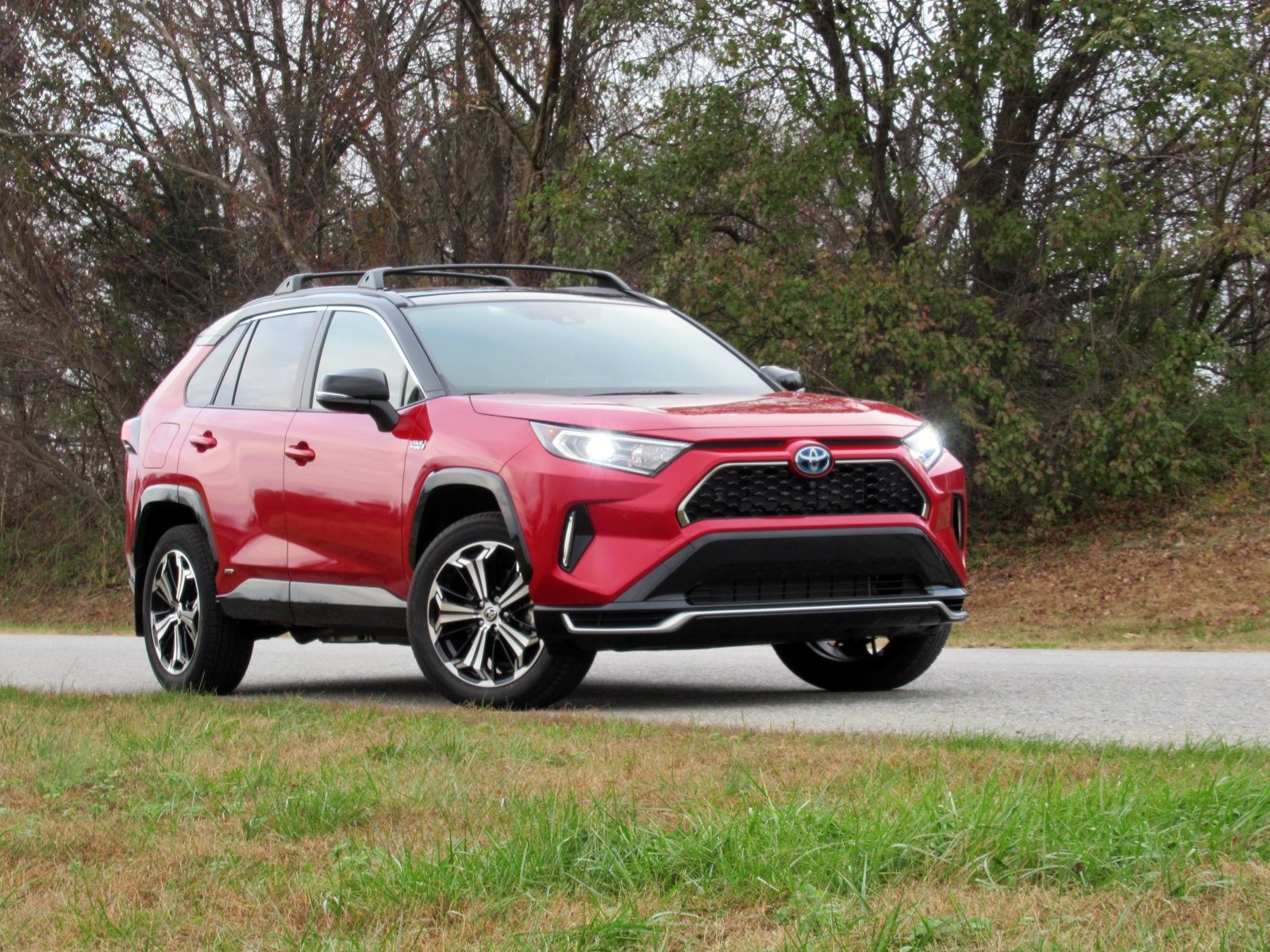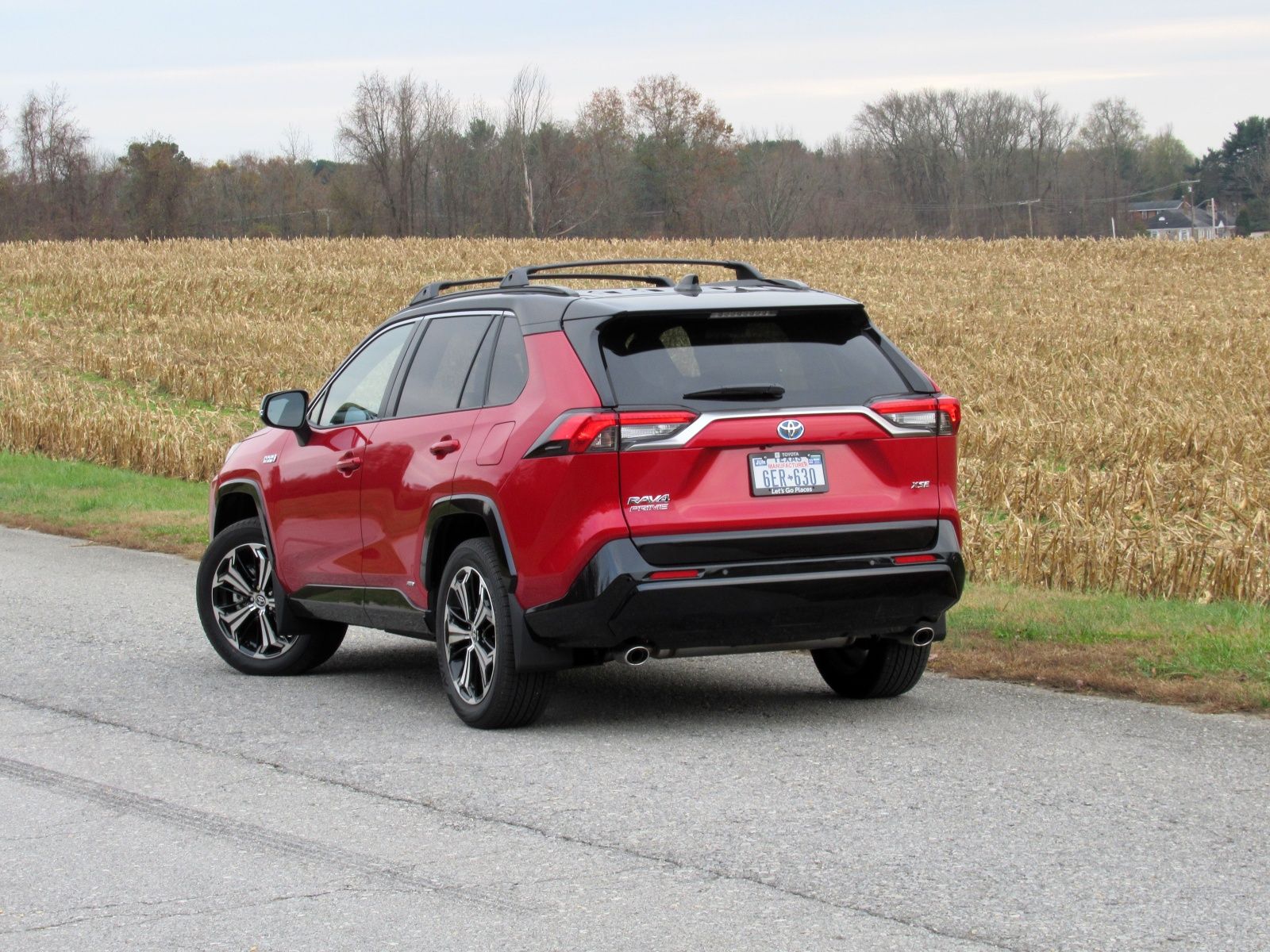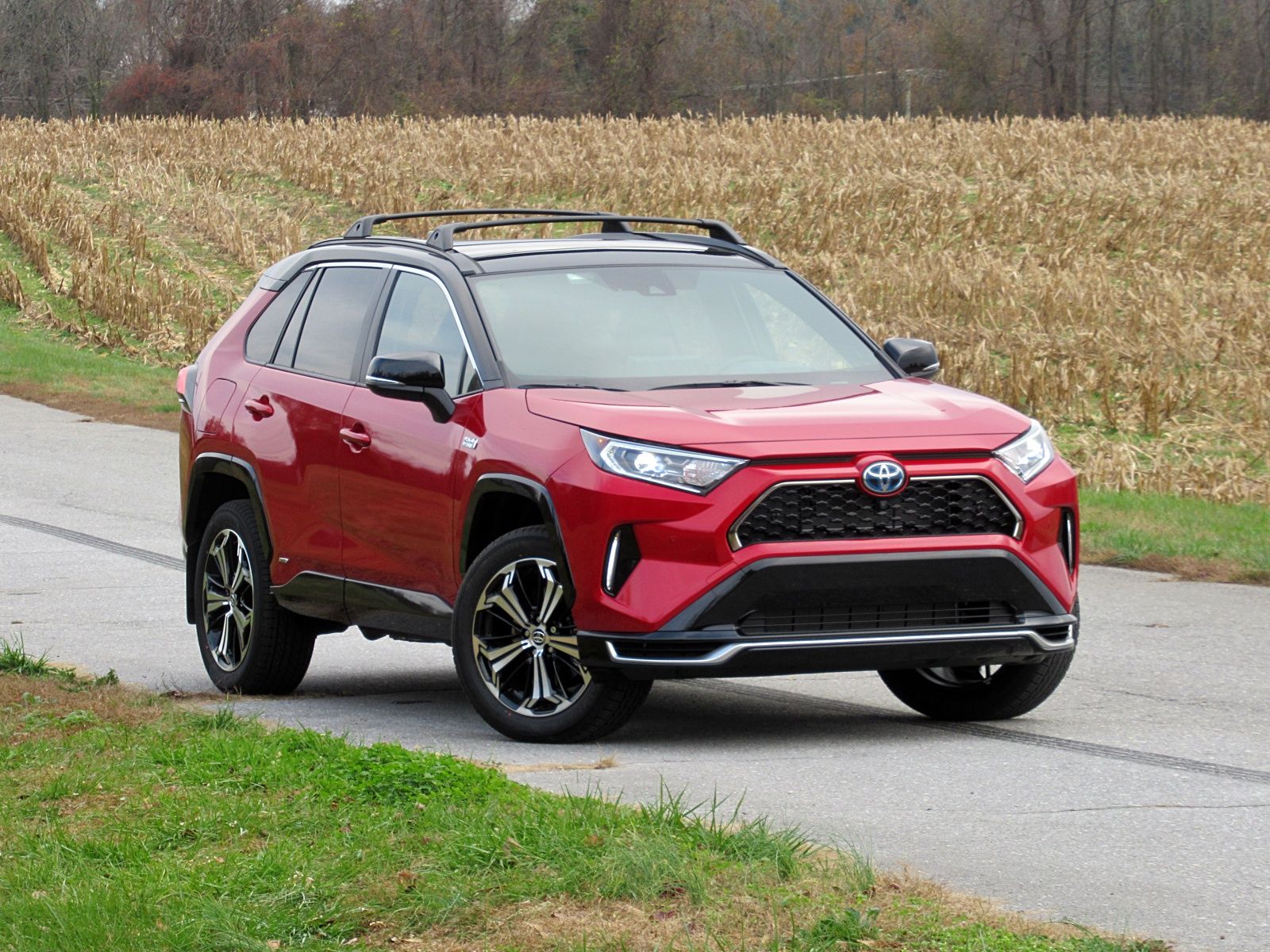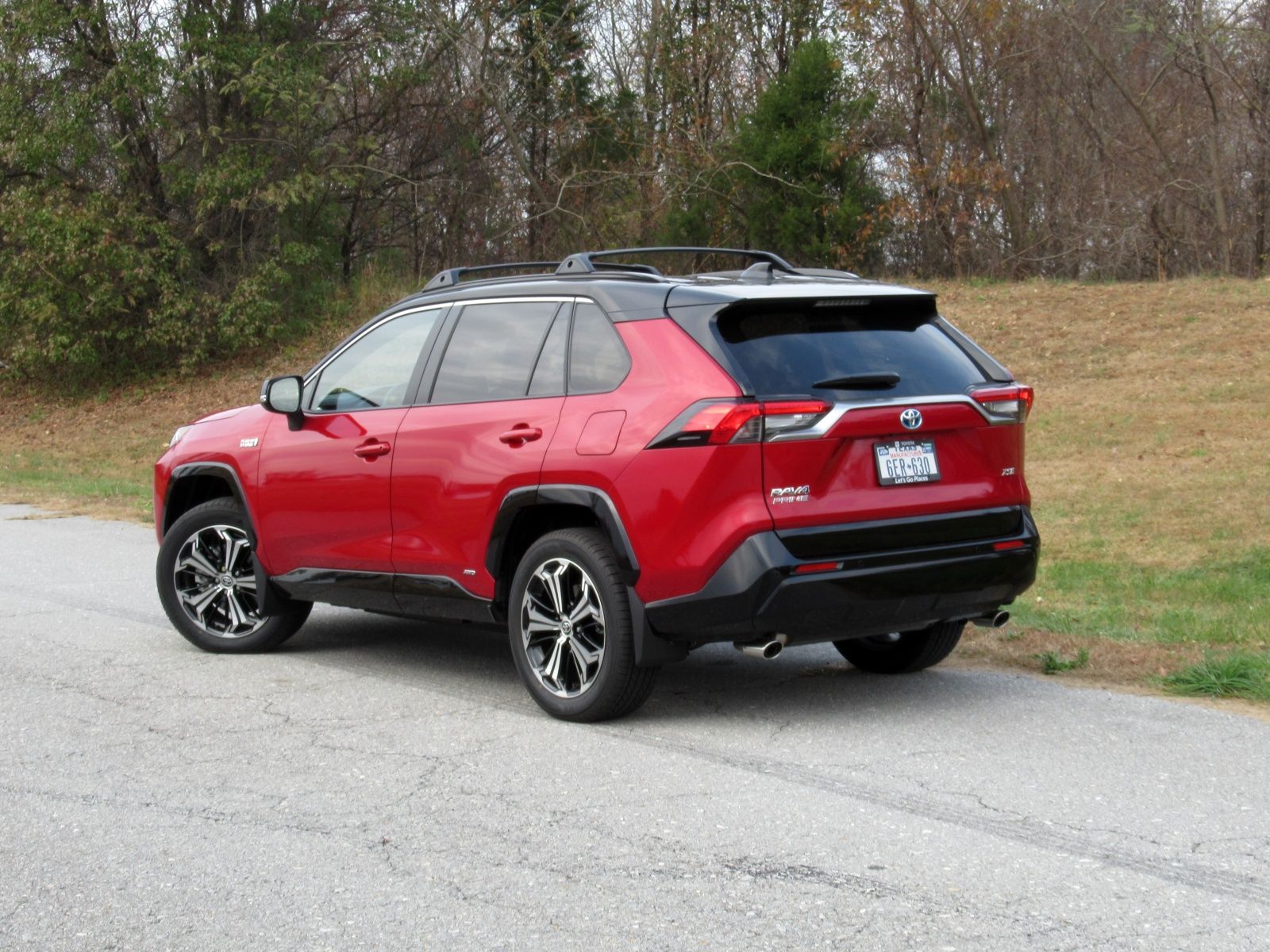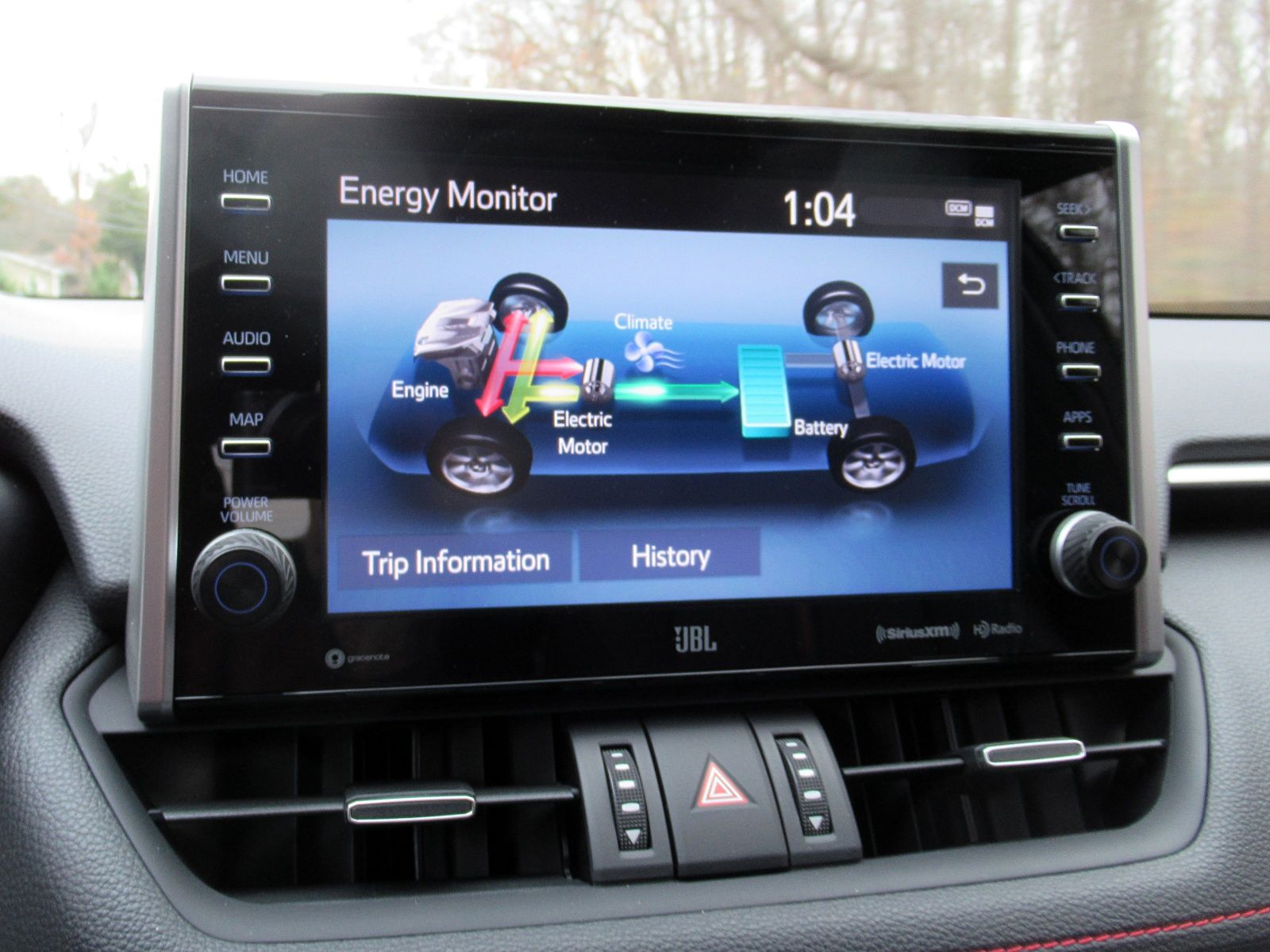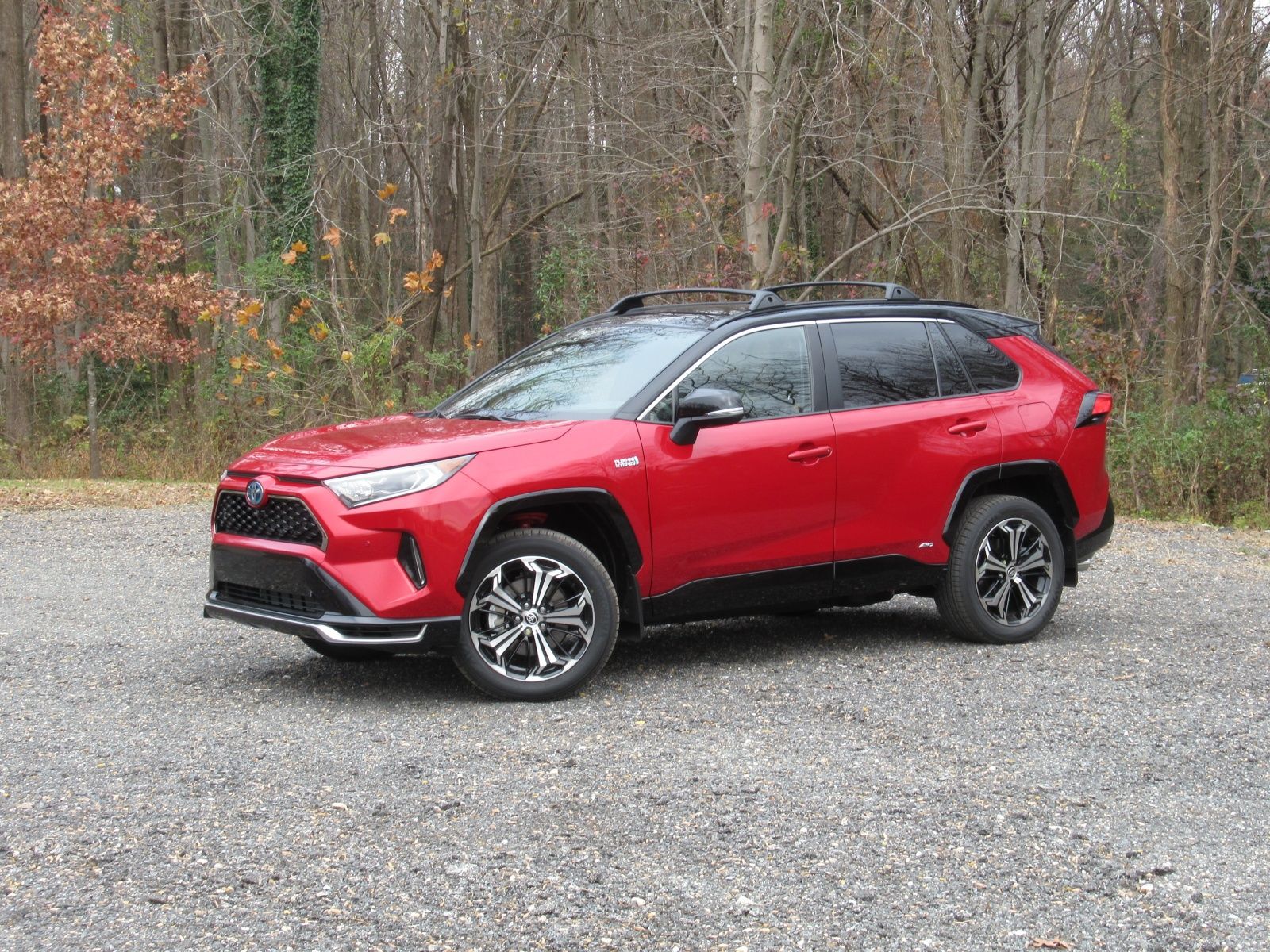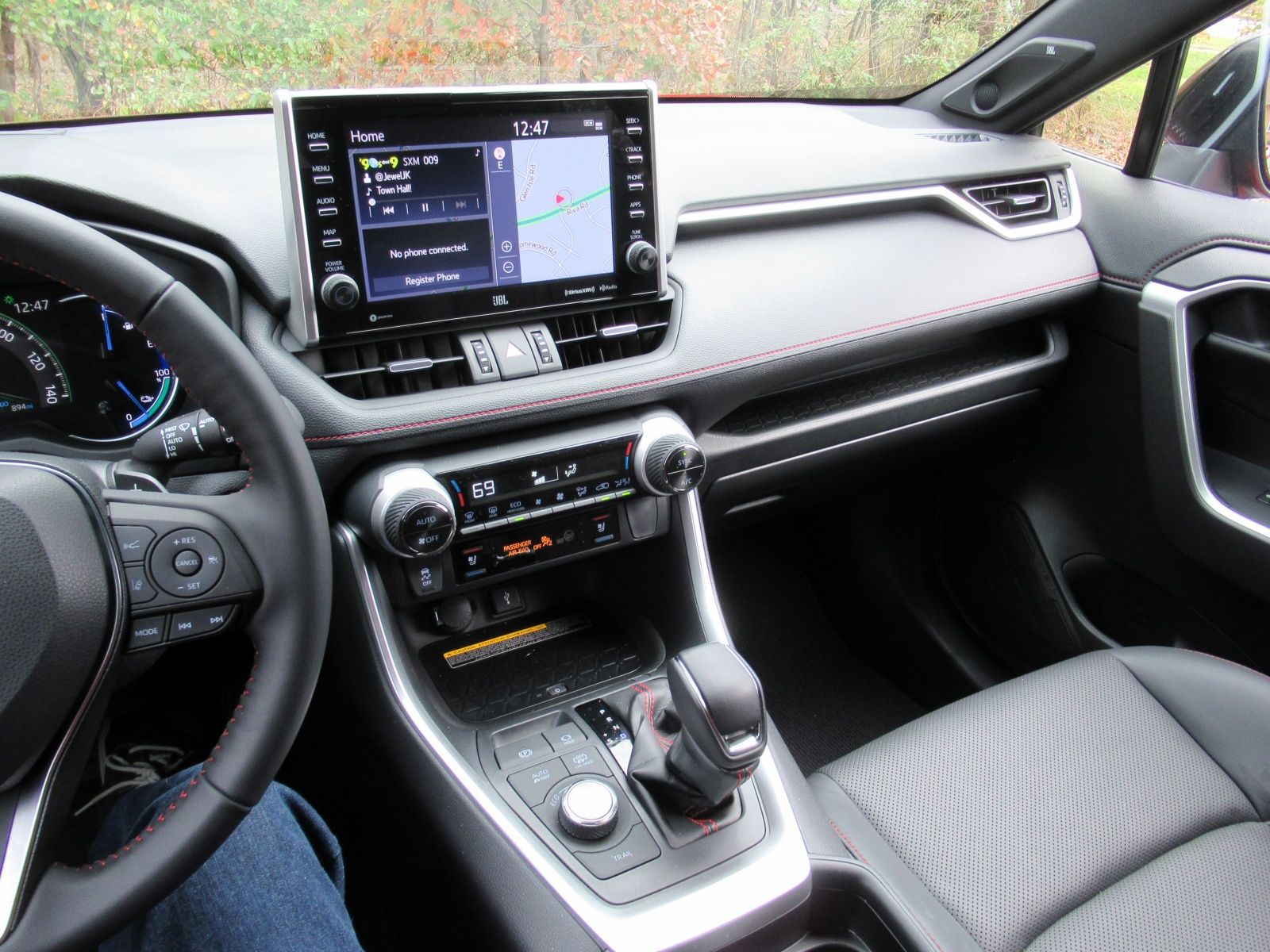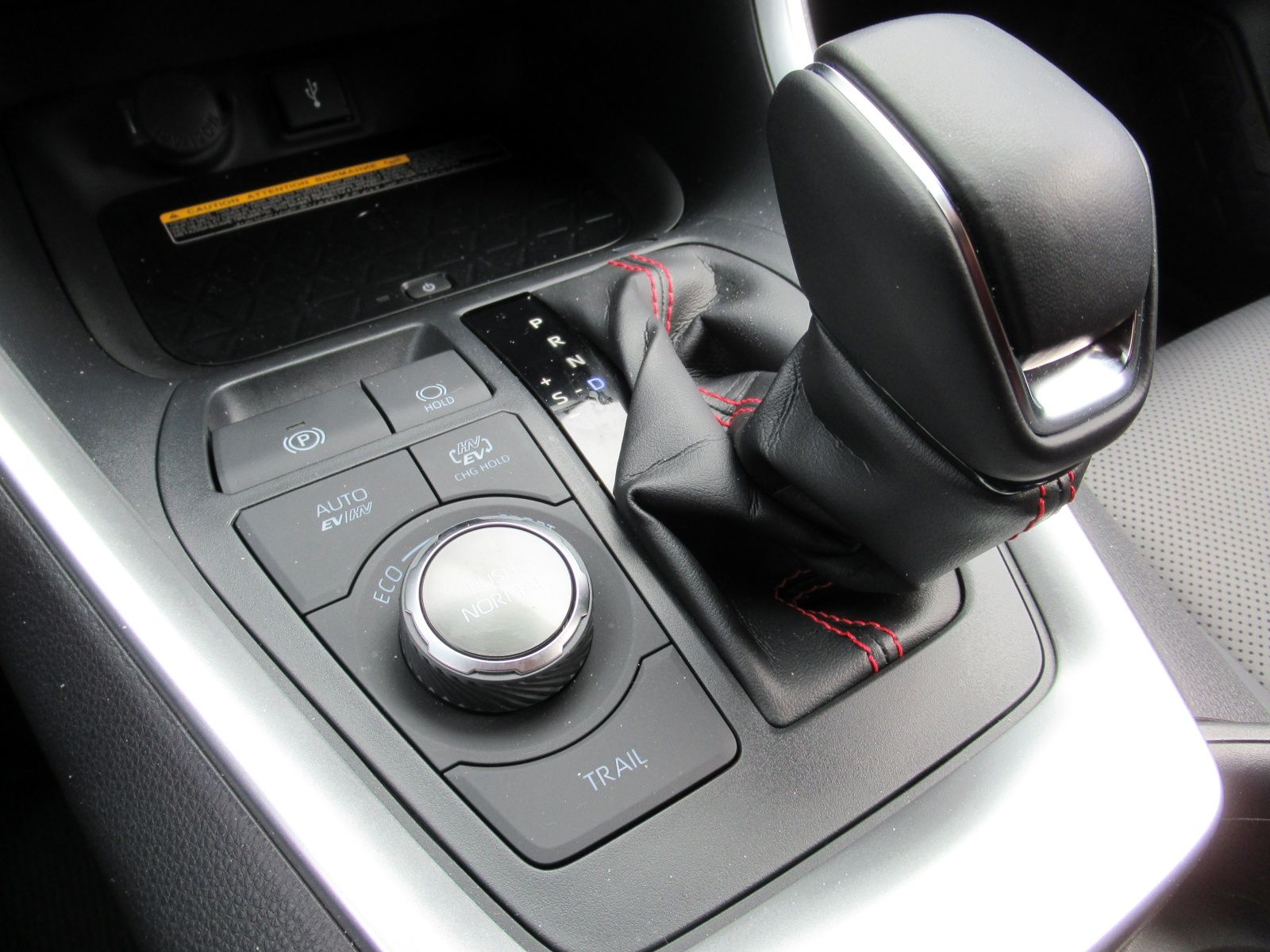Any new version of the Toyota RAV4 is automatically a big deal. Aside from a few big pickup trucks, the RAV4 is America’s favorite vehicle. And it has also been a winner among eco-conscious buyers; not long after the gas/electric RAV4 Hybrid debuted in 2016, it became America’s favorite hybrid — even outselling Toyota’s iconic Prius.
So when Toyota announced the 2021 RAV4 Prime, it was a big deal. Forget about the Mitsubishi Outlander PHEV, a low-range plug-in hybrid version of a forgettable SUV. Forget about a planned Ford Escape plug-in hybrid, which doesn’t offer all-wheel-drive and whose on-sale date got bumped back a year over fire risks. Forget about various plug-in sedans and hatchbacks, and various expensive luxury plug-in hybrids that can barely crack 20 miles of low-speed all-electric use. And forget about the range anxiety that keeps many people away from fully electric vehicles. No, it’s the RAV4 Prime that promises to make Americans plug in their cars en masse.
We spent a week in the new 2021 Toyota RAV4 Prime to see how it bridges the gap between the gasoline and electric worlds. Here’s what we found.
2021 Toyota RAV4 Prime - Driven
- Make: Array
- Model: 2021 Toyota RAV4 Prime - Driven
2021 TOYOTA RAV4 PRIME - DESIGN AND UTILITY
Many alternative-fuel vehicles have found success in being different. Tesla’s all-electric vehicles are an immersive experience in technology, even to a fault. And Toyota’s own Prius is famously quirky in its interior and exterior designs. The RAV4 Prime, though, is entirely mainstream. Toyota hardly tinkered with any aspect of the standard RAV4’s styling to make either the non-plug-in RAV4 Hybrid or the plug-in RAV4 Prime.
On the outside, the RAV4 Prime wears a few subtle badges, its own wheel design, and dual fuel doors (one for gasoline on the driver’s side, one for electricity on the passenger’s side). Otherwise, everything is shared with the standard RAV4. The good news is that the standard RAV4 is a pretty successful design. It’s chunky and aggressive, looking more like an SUV than most small crossovers, yet without looking like a caricature. The upright front end, squared-off fenders, and simple lines speak to utility and purpose. The Prime is available only in the sport-themed SE and XSE trim levels, which replace some sturdy plastic exterior trim with shiny painted black; this reduces the effect somewhat, but it’s still a good-looking little crossover.
2021 Toyota RAV4 Prime exterior dimensions
|
Wheelbase |
105.9 in. |
|---|---|
|
Overall Length |
180.9 in. |
|
Overall Width |
73.0 in. |
|
Overall Height (with antenna) |
67.0 in. (SE)/67.2 in. (XSE) |
|
Ground Clearance |
8.1 in. (SE) / 8.3 in.(XSE) |
|
Approach/Departure Angle |
18.6 / 21.4 degrees |
Continuing the exterior’s rugged vibe, sturdy rubber trim on its door pulls and dashboard knobs. Everything is user-friendly and logical, and we had few complaints about the interior quality in the context of a compact crossover. But if you’re truly excited about electrification, the experience is wanting. You have to go through multiple submenus to see any information about gasoline or energy use, and even the remaining electric range — key to any plug-in vehicle — is a small number on a screen between the gauges. The trip computer’s calculated gas mileage caps out at 99.9 mpg, well below the level that many owners of long-range PHEVs typically observe. Even aside from these functional drawbacks, some EV aficionados will scoff at the RAV4’s lack of cutting-edge interior details, including an infotainment system that’s ho-hum even for a mainstream vehicle. Its five USB ports are welcome, though.
Like a regular RAV4, the RAV4 Prime seats four adults easily and five without too much squeezing. Its bigger battery robs some cargo space; it slips from 37.6 cubic feet behind the rear seat in the standard RAV4 and the RAV4 Hybrid to 33.5 cubic feet in the RAV4 Prime, while the Prime’s maximum cargo space drops from 69.8 to 63.2 cubic feet. The latter is on the small side for a compact crossover, but the difference isn’t massive. And space behind the rear seat remains class-competitive even on the Prime. Towing capacity is 2,500 lbs, trumping the Mitsubishi Outlander PHEV and Ford Escape PHEV’s 1,500 lbs — and the RAV4 Hybrid’s 1,750 lbs.
2021 TOYOTA RAV4 PRIME - DRIVING EXPERIENCE
With a manufacturer-estimated 5.7-second run to 60 mph, this SUV is even quicker than the newly introduced Supra 2.0-liter.
The RAV4 Prime feels like a cheaper vehicle with lots of power (which it is). It chirps the tires to scoot forward vigorously, but it suffers from vague steering and a lack of suspension composure. That’s perfectly normal in a standard compact crossover with unexceptional acceleration, but Toyota didn’t upgrade the rest of the Prime to match its stellar battery and electric motor. And for non-enthusiasts, the RAV4 Prime is sold only in the performance-themed SE and XSE models, whose sport-tuned suspensions draw a crashier ride quality than standard RAV4s.
We don’t want to sound like the RAV4 Prime is an unpleasant vehicle to drive. Far from it. In electric mode, it has peppy, silent acceleration. And ride and handling aren’t awful, just unremarkable. And once your range is depleted, the RAV4 Prime behaves much like a standard RAV4 Hybrid, which already has more power and a quieter gasoline engine than the non-hybrid RAV4.
2021 Toyota RAV4 Prime specifications
|
Hybrid System Net Horsepower |
302 combined net hp |
|---|---|
|
Type, Materials |
2.5-liter Dynamic Force 4-cylinder, aluminum alloy block with aluminum alloy cylinder head |
|
Displacement |
2,487 cc |
|
Bore x Stroke |
87.5 x 103.4 mm |
|
Compression Ratio |
14.0:1 |
|
Horsepower |
177hp @ 6,000 rpm |
|
Torque |
165lb.-ft. @3,600rpm |
|
Electric Driving Range |
42 miles |
|
MPGe |
94 |
2021 TOYOTA RAV4 PRIME - RANGE AND MILEAGE
The EPA estimates the RAV4 Prime can travel up to 42 miles per all-electric charge, which takes as little as 2.5 hours on a public fast-charging station. A 240-volt charging station — common for public chargers and for those installed at home — still fills upthe battery in just 4.5 hours. But you can also fully charge the battery in 12 hours using a standard household outlet, which means if you plug in when you get home from work, you’ll be ready to go again in the morning.
And because the RAV4 Prime is a plug-in hybrid, it also has a gasoline engine on board (a 2.5-liter four-cylinder with 177 horsepower) for any time you aren’t able to charge up the battery. An EPA-estimated 38 mpg in gasoline-only operation is excellent for an SUV but slightly behind the RAV4 Hybrid’s 40 mpg due to the Prime’s heavier battery. When you’re able to stick to electric operation, the Prime’s efficiency jumps to the equivalent of 94 mpg.
The first time was a chillier night with a higher proportion of highway driving, where electric vehicles tend to be less efficient than at lower speeds and stop-and-go conditions. The trip computer estimated we’d wring 36 miles from the vehicle, and we managed 37. The second trip — with warmer temperatures, primarily lower speeds, and more stop-and-go driving — stretched that range to 43 miles, beating the trip computer’s estimated 41 miles or the EPA’s 42 miles. We also reliably topped 40 mpg for the times after the battery was used up, even hitting 58.9 mpg for one 12-mile drive around the quiet, narrow streets of Annapolis, Maryland.
2021 TOYOTA RAV4 PRIME - MODELS AND PRICING
The 2021 RAV4 Prime starts at $38,100, plus an $1,175 destination charge. You can claim a $7,500 federal tax credit, though, in addition to further incentives available in some states. The base SE trim level includes cloth upholstery, heated front seats, an eight-way power-adjustable driver’s seat, an 8-inch touchscreen infotainment system with Android Auto and Apple CarPlay, a power liftgate, automatic climate control, 18-inch alloy wheels, a comprehensive suite of driver-assistance features, and all-wheel-drive. When you factor in the federal tax credit, that’s not too bad for any compact crossover, much less a plug-in hybrid.
The XSE model, like our test vehicle, starts at $41,425 with leatherette upholstery, a moonroof, a larger 9-inch touchscreen, a wireless smartphone charger, and big 19-inch wheels. Our test vehicle included a $1,620 navigation system, a $3,765 Premium Package — a panoramic moonroof, a head-up display, a surround-view camera, red-stitched upholstery, ventilated front seats, adaptive headlights, a hands-free liftgate, a four-way power passenger seat, a memory system for the driver’s seat, and adaptive headlights — and various small extra add-ons. In all, our test vehicle hit $49,831. Thank goodness for the $7,500 tax credit, which helps the RAV4 Prime make actual economic sense instead of being a cheap-feeling, cheap-to-operate vehicle with a luxury price tag.
2021 TOYOTA RAV4 PRIME KEY COMPETITORS
2020 Ford Escape PHEV
While it’s not on sale yet, the Ford Escape PHEV is the RAV4 Prime’s closest rival. It offers nearly as much range (37 miles per charge) at a significantly lower price (it starts at $33,040 before its $6,843 federal tax credit). The Escape also provides agreeable driving dynamics and decent interior space. But you get 221 horsepower instead of the Toyota’s 302, and you can only get it with front-wheel-drive. Plus, again, you can’t actually buy one until Ford figures out why they’ve been catching fire.
Read our full review on the 2020 Ford Escape PHEV
2020 Mitsubishi Outlander PHEV
This is the other relatively affordable PHEV you can actually buy today. The Outlander PHEV is an unremarkable SUV whose performance, range, and gas mileage are far outclassed by the RAV4 Prime. And it’s not even especially inexpensive, though that’s in part because the base $36,295 SEL model is a well-equipped vehicle with leather upholstery and other high-end features. The Outlander PHEV slightly roomier than the RAV4 Prime, and it is slightly less expensive. If you typically drive less than 22 miles per day and avoid interstate speeds, you’ll get fully electric operation. And if you don’t care about zippy acceleration, you won’t mind that it makes just 190 horsepower. But overall, the RAV4 Prime is the far superior vehicle.
Read our full review on the 2020 Mitsubishi Outlander PHEV
2020 Honda Clarity PHEV
The RAV4 Prime stands apart from other PHEV SUVs for its range per charge. But if you don’t need your comfortable, family-friendly PHEV to be an SUV, the Honda Clarity PHEV midsize sedan can travel an EPA-estimated 47 miles per charge and costs $33,400 before a $7,500 federal tax credit. It’s not speedy, though, and while it’s quite comfortable for five passengers, it lacks the cargo and towing capacities of the RAV4 Prime.
Read our full review on the 2020 Honda Clarity PHEV
2021 TOYOTA RAV4 PRIME IN A NUTSHELL
While its performance and range are impressive, especially when combined with its utility and user-friendliness, the RAV4 Prime doesn’t have a high-tech or high-end vibe. Still, consumers who are considering the standard RAV4 and RAV4 Hybrid — and there are many of them — should also be thinking about whether the Prime would help them go nearly all-electric. There are few downsides to this EV-lite life, and plenty of advantages.

